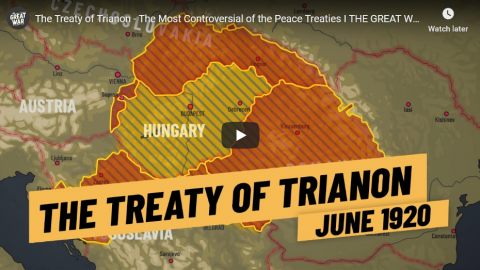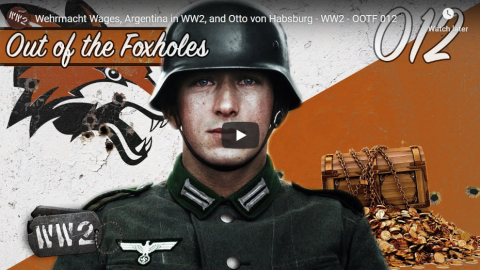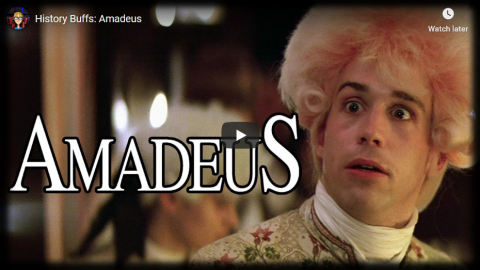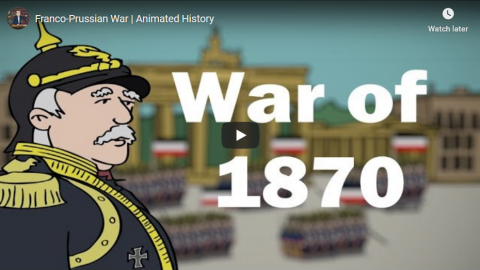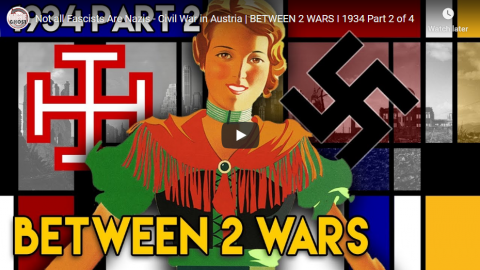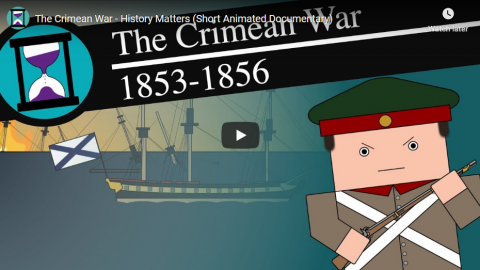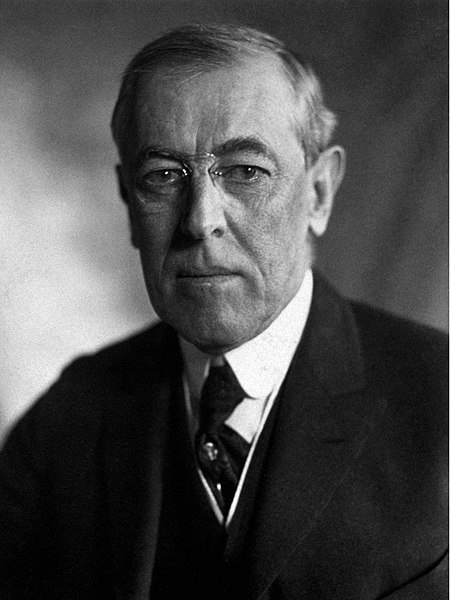The Great War
Published 13 Jun 2020Sign up for Curiosity Stream and get Nebula bundled in: https://curiositystream.com/thegreatwar
The last of the big peace treaties signed in Paris that finalized the borders in Europe was the Treaty of Trianon. Even at the time, Hungarians considered it a historic injustice while nations such as Czechoslovakia, Romania and Yugoslavia were quite happy with the result. We examine how the treaty was signed and negotiated.
» SUPPORT THE CHANNEL
Patreon: https://www.patreon.com/thegreatwar
Merchandise: https://shop.spreadshirt.de/thegreatwar/» SOURCES
Isaiah Bowman, The New World-Problems in Political Geography, (Yonkers-on-Hudson: World Book Company, 1921)Francis Deák & Dezsó Ujváry, Paper and Documents Relating to the Foreign Relations of Hungary, Volume 1; 1919-1920, (Budapest: Royal Hungarian Ministry of Foreign Affairs, 1939)
Conan Fischer, Europe between democracy and dictatorship, 1900-1945, (Chichester: Malden, MA: Wiley-Blackwell, 2011)
Mike Gyula (ed.), Magyar Statisztikai Zsebkönyv, 1940 [Hungarian Statistical Pocket Book 1940], (Központi Statisztikai Hivatal: Budapest, 1940)
Róbert Győri & Charles W.J. Withers, “Trianon and its aftermath: British geography and
the ‘dismemberment’ of Hungary, c.1915-c.1922”, Scottish Geographical Journal, 135:1-2 (2019)Michael Károlyi, Memoirs of Michael Károlyi: Faith Without Illusion (London: Jonathan Cape, 1956)
Jörn Leonhard, Der überforderte Frieden: Versailles und die Welt 1918-1923, (Bonn: bpp, Bundeszentrale für Politische Bildung, 2019)
C.A. Macartney, Hungary and her successors: the treaty of Trianon and its consequences 1919-1937, (London: Oxford University Press, 1937)
Margaret MacMillan, Paris 1919: Six Months That Changed the World, (London: Macmillan, 2019)
Arnold Suppan, The Imperialist Peace Order in Central Europe: Saint-Germain and Trianon, 1919–1920, (Vienna: Austrian Academy of Sciences Press, 2019)
Miklós Zeidler; Thomas J. DeKornfeld; Helen DeKornfeld, “Ideas on Territorial Revision in Hungary, 1920-1945”, East European Monographs, 717, (2010)
Miklós Zeidler, Trianon, (Budapest, Osiris, 2003.)» SOCIAL MEDIA
Instagram: https://instagram.com/the_great_war
Twitter: https://twitter.com/WW1_Series
Reddit: https://reddit.com/r/TheGreatWarChannel»CREDITS
Presented by: Jesse Alexander
Written by: Jesse Alexander
Director: Toni Steller & Florian Wittig
Director of Photography: Toni Steller
Sound: Toni Steller
Editing: Toni Steller
Mixing, Mastering & Sound Design: http://above-zero.com
Maps: Daniel Kogosov (https://www.patreon.com/Zalezsky)
Research by: Jesse Alexander
Fact checking: Florian WittigChannel Design: Alexander Clark
Original Logo: David van StepholdA Mediakraft Networks Original Channel
Contains licensed material by getty images
All rights reserved – Real Time History GmbH 2020
June 14, 2020
The Treaty of Trianon – The Most Controversial of the Peace Treaties I THE GREAT WAR 1920
May 22, 2020
Wehrmacht Wages, Argentina in WW2, and Otto von Habsburg – WW2 – OOTF 012
World War Two
Published 21 May 2020You’re just an average German doing your work when suddenly you’re called up for service and asked to put your life on the line for your country. But how does your country repay you? Find out today as we take a look at the regular German soldier’s salary, the political turmoil in Argentina during the war and the former powerhouse of Europe: the mighty Habsburg dynasty.
Join us on Patreon: https://www.patreon.com/TimeGhostHistory
Or join The TimeGhost Army directly at: https://timeghost.tvFollow WW2 day by day on Instagram @World_war_two_realtime https://www.instagram.com/world_war_t…
Between 2 Wars: https://www.youtube.com/playlist?list…
Source list: http://bit.ly/WW2sourcesHosted by: Indy Neidell
Written by: Isabel Wilson and Sietse Kenter
Director: Astrid Deinhard
Producers: Astrid Deinhard and Spartacus Olsson
Executive Producers: Astrid Deinhard, Indy Neidell, Spartacus Olsson, Bodo Rittenauer
Creative Producer: Joram Appel
Post-Production Director: Wieke Kapteijns
Research by: Isabel Wilson and Sietse Kenter
Edited by: Mikołaj Cackowski
Sound design: Marek Kamiński
Map animations: Eastory (https://www.youtube.com/c/eastory)Colorizations by:
Carlos Ortega Pereira, BlauColorizations – https://www.instagram.com/blaucoloriz…
Norman Stewart – https://oldtimesincolor.blogspot.com/
Adrien Fillon – https://www.instagram.com/adrien.colo…Sources:
Bundesarchiv
IWM CH 11432
Wehrmacht Private, Sergeant and Colonel insignia, courtesy Skjolbro, Wikimedia Commons
Wehrmacht General and Gefreiter insignia, courtesy F l a n k e r, Wikimedia Commons
Otto von Habsburg with his son Georg in European Parliament , courtesy Ferenc Csomafáy
Portrait of Otto von Habsburg, courtesy Oliver MarkSoundtracks from the Epidemic Sound:
Max Anson – “Ancient Saga”
Johannes Bornlof – “Deviation In Time”
Johannes Bornlof – “The Inspector 4”Archive by Screenocean/Reuters https://www.screenocean.com.
A TimeGhost chronological documentary produced by OnLion Entertainment GmbH.
February 27, 2020
Appeasement – How the West Helped Hitler Start WW2 | BETWEEN 2 WARS I 1938 Part 1 of 4
TimeGhost History
Published 26 Feb 2020With the increasing aggression of Italy, Japan, and Germany in the 1930s, the League of Nations is becoming increasingly ineffective in regulating international disputes. Britain and France adopt a diplomatic strategy of appeasement to hold off all-out war and buy some crucial time. But will it work, and can Adolf Hitler’s territorial ambitions be contained?
Join us on Patreon: https://www.patreon.com/TimeGhostHistory
Hosted by: Indy Neidell
Written by: Francis van Berkel and Spartacus Olsson
Directed by: Spartacus Olsson and Astrid Deinhard
Executive Producers: Bodo Rittenauer, Astrid Deinhard, Indy Neidell, Spartacus Olsson
Creative Producer: Joram Appel
Post-Production Director: Wieke Kapteijns
Research by: Tom Meaden, Izzy Wilson, and Francis van Berkel
Edited by: Daniel Weiss
Sound design: Marek KamińskiSources:
Bundesarchiv_Bild:
102-08806, 102-08810, 102-09042,
119-5243, 146-1970-052-24, 146-1985-108-27A,
183-1987-0922-500, 183-R03618,
Photo from color by klimbim.Colorizations by:
– Daniel Weiss
– Norman Stewart
– Julius Jääskeläinen – https://www.facebook.com/JJcolorization/Soundtracks from Epidemic Sound:
– “The Inspector 4” – Johannes Bornlöf
– “Last Point of Safe Return” – Fabien Tell
– “Split Decision” – Rannar Sillard
– “Death And Glory 1” – Johannes Bornlöf
– “Guilty Shadows 4” – Andreas Jamsheree
– “Disciples of Sun Tzu” – Christian Andersen
– “First Responders” – Skrya
– “Easy Target” – Rannar Sillard
– “Death And Glory 3” – Johannes Bornlöf
– “The Charleston 3” – Håkan ErikssonA TimeGhost chronological documentary produced by OnLion Entertainment GmbH.
From the comments:
TimeGhost History
2 days ago (edited)
Hindsight is 20/20. It’s easy to look back at Anglo-French foreign policy in the 1930s and be shocked at how many mistakes politicians like Neville Chamberlain could make. This video will probably only add to that judgement, it more or less charts all the times Hitler could have been stopped but wasn’t. But put yourself in the context of the time. Memories of the Great War are only twenty years ago old, and the public has no appetite for another massive conflict. The global economy is only just showing signs of recovery after the Great Depression, and Britain and France barely have the industrial capacity to fight a modern war. So, imagine you’re Chamberlain (or any other politician of the time), are you really going to commit your country to war over a territorial disagreement between Germany and Czechoslovakia? The invasion of Poland in September 1939 shows that appeasement was a mistake. But maybe it was an understandable one? Let us know what you think in the comments.Cheers,
Francis.
January 15, 2020
History Buffs: Amadeus
History Buffs
Published 3 Dec 2015In this episode we look at the original Rock n Roll bad boy, Wolfgang Amadeus Mozart! And who says this show isn’t classy and sophisticated

● Follow us on Twitter: https://twitter.com/HistoryBuffs_
_________________________________________________________________________
Amadeus is a 1984 American period drama film directed by Miloš Forman, written by Peter Shaffer, and adapted from Shaffer’s stage play Amadeus (1979). The story is set in Vienna, Austria, during the latter half of the 18th century.
The film was nominated for 53 awards and received 40, including eight Academy Awards (including Best Picture), four BAFTA Awards, four Golden Globes, and a Directors Guild of America (DGA) award. In 1998, the American Film Institute ranked Amadeus 53rd on its 100 Years… 100 Movies list.
The story begins in 1823 as the elderly Antonio Salieri (F. Murray Abraham) attempts suicide by slitting his throat while loudly begging forgiveness for having killed Wolfgang Amadeus Mozart (Tom Hulce) in 1791. Placed in a lunatic asylum for the act, Salieri is visited by Father Vogler (Richard Frank), a young priest who seeks to hear his confession. Salieri is sullen and uninterested but eventually warms to the priest and launches into a long “confession” about his relationship with Mozart.
December 11, 2019
Franco-Prussian War | Animated History
The Armchair Historian
Published 4 Feb 2018What was the Franco Prussian War?
Our Website: https://www.thearmchairhistorian.com/
Our Twitter:
@ArmchairHistOur Discord:
https://discord.gg/Ppb2cUdSources:
https://www.britannica.com/event/Fran…
http://francoprussianwar.com/
http://history-world.org/franco_pruss…
http://www.newworldencyclopedia.org/e…
https://www.warhistoryonline.com/hist…
http://geacron.com/home-en/?v=m&lang=…Music: Music: Antonio Salieri: “Twenty six variations on La Folia de Spagna“
November 8, 2019
Not all Fascists Are Nazis – Civil War in Austria | BETWEEN 2 WARS I 1934 Part 2 of 4
TimeGhost History
Published 7 Nov 2019Austria is very divided in the 1930s. Austrian Nationalism opposes the idea of a Greater German Reich, which triggers the emergence of Austrofascism. They find themselves in a violet struggle against Nazis, Communists, Democrats and Socialists.
Join us on Patreon: https://www.patreon.com/TimeGhostHistory
Hosted by: Indy Neidell
Written by: Spartacus Olsson, Joram Appel and Francis van Berkel
Directed by: Spartacus Olsson and Astrid Deinhard
Executive Producers: Bodo Rittenauer, Astrid Deinhard, Indy Neidell, Spartacus Olsson
Creative Producer: Joram Appel
Post-Production Director: Wieke Kapteijns
Research by: Naman Habtom, Joram Appel and Francis van Berkel
Edited by: Daniel Weiss
Sound design: Marek KaminskiColorized pictures:
– Daniel Weiss,
– Julius Jääskeläinen (https://www.facebook.com/JJcolorization/),
– Dememorabilia (https://instagram.com/dememorabilia)Sources:
– Image sources: Bundesarchiv, Bundesarchiv, Bild_183-R36187/102-10358/102-00842A/102-00836/102-00840/102-00839/102-09844. Fortepan_28800(FOTOFORTEPAN MZSLOfner Károly)
– Icons from the Noun Project: School by David, college by anbileru adaleru, Law by Delwar Hossain, Parliament by Gerald Wildmoser, Diploma by Alena, guns by Cards Against Humanity, poll by Bastien Ho,A TimeGhost chronological documentary produced by OnLion Entertainment GmbH.
From the comments:
TimeGhost History
2 days ago (edited)
A lot comes together in this episode. Austria in 1934 is where a lot of political movements, ideologies and methods we saw throughout the ’20s and ’30s in previous episodes go head to head. We explain how Austro-Fascism differs from fascism and how Nazism and Austrofascism engage in a violent clash.So, this episode covers Communism, Fascism, Austrofascism and Nazism in the context of Austria in 1934. I can predict some of the comments that will appear under this video, so allow me to explain how we interpret and explain the key differences between some of these. In academia, we use a right-left axis to place political movements on based on their ideology, NOT just because of their methods or form of state. Our definition is not politically motivated or does not relate to current day politics. We only apply this definition to the specific historical context of the interwar era and World War Two. In short: totalitarian or authoritarian governments are not all the same. Fascism and Nazism are generally placed on the right because they were driven by state or race superiority, Communism and Socialism are placed on the left as they were driven by class-differences and (theoretical) equality.
Granted, there is a rich scholarly debate surrounding the function and interpretation of the left-right axis. Anyone who is interested to read more about that can read ‘Andrew Heywood, Political Ideologies: An Introduction (2017) 15-17.’ However, there are limits to what is accepted as an academic argument and what is plain propaganda. Socialism and Nazism are not the same by any respectable definition. Communism and Nazism both embracing totalitarian regimes does not make them the same. We love to engage in debates about this, and we will do so with anyone who presents a real argument with real examples and sources. We will not engage with trolls who are politicising this historical debate with a modern-day agenda.
Cheers,
Joram
October 3, 2019
The Crimean War – History Matters
History Matters
Published on 7 Apr 2019Twitter: https://twitter.com/Tenminhistory
Patreon: https://www.patreon.com/user?u=4973164This episode covers the Crimean War (1853-1856) between the Russian Empire and the Ottomans, the British, the French and the Sardinians. It began largely out of Russo-Ottoman rivalry and because French Emperor Napoleon III had been appointed the protector of Christians within the Ottoman Empire, at the expense of the Russian Emperor Nicholas I. The war really kicked off in 1854 with the British and French invasion of Crimea and largely ended with the capture of Sevastopol in 1855, after which the Russians sued for peace.
September 15, 2019
Worse Than Versailles? – The Treaty of Saint-Germain I THE GREAT WAR 1919
The Great War
Published on 13 Sep 2019Signup for your FREE trial to The Great Courses Plus here: http://ow.ly/F9LC30po9ux
The Great Courses Plus is currently available to watch through a web browser to almost anyone in the world and optimized for the US, UK, and Australian markets. The Great Courses Plus is currently working to both optimize the product globally and accept credit card payments globally.
The Treaty of Versailles between the Allies and Germany was only one of the peace treaties that followed the defeat of the Central Powers. The new Austrian republic, one of the countries that emerged from the collapse of the Austro-Hungarian Empire, also tried to get a favorable deal with the Allies in Paris in 1919. Like Versailles, the The Treaty of Saint-Germain caused an outcry across the country.
» SUPPORT THE CHANNEL
Patreon: https://www.patreon.com/thegreatwar
Merchandise: https://shop.spreadshirt.de/thegreatwar/»CREDITS
Presented by: Jesse Alexander
Written by: Jesse Alexander
Director: Toni Steller & Florian Wittig
Director of Photography: Toni Steller
Sound: Toni Steller
Editing: Toni Steller
Mixing, Mastering & Sound Design: http://above-zero.com
Motion Design: Christian Graef – GRAEFX
Maps: Daniel Kogosov (https://www.patreon.com/Zalezsky)
Research by: Jesse Alexander
Fact checking: Florian WittigChannel Design: Alexander Clark
Original Logo: David van StepholdA Mediakraft Networks Original Channel
Contains licensed material by getty images
All rights reserved – Real Time History GmbH 2019
August 8, 2019
QotD: Austrians – strudel-eating surrender monkeys
Oh yes, did I mention the Austrians? A grand military tradition. The Radetzky march, all that stuff. Let’s look at their record more closely, shall we?
The Austrians (or rather the Habsburgs) built up a moderately large empire by persuading the Magyars that they could be sort of equal partners in the empire in an unequal sort of way, expert politicking and setting one lot of Slavs against another in the Balkans and central Europe, and marrying into the right ducal families in bits of what was later to become Italy. They never quite managed to sort out the Serbs, however, who felt that fighting nobly against the Turks was their speciality, and they were forced out of Switzerland early on by a small boy with an apple on his head.
The year 1683 may reasonably be considered a turning point for Western Christendom. Over the preceding century or so the Turkish Ottoman Empire had steadily advanced up the Balkan peninsula and after being balked, as it were, for many years by Macedonians, Bulgars, Albanians, Serbs, Bosnians, Croats, Slovenians, Slavonians and some I’ve probably forgotten, finally got as far as the Habsburg capital, Vienna, to which they laid siege. The siege failed, and the Turks were repelled, never again to return. Why? Because Austria was rescued by the Poles under Jan III Sobieski.
Under the noted and renowned Empress Maria Theresa, a War of the Austrian Succession was held. In keeping with tradition, it was mainly fought between the French and the English in Belgium (the French, opposed to Austria, won), except for an unimportant sideshow which appears to have been between the French and the Indians in Saratoga. The upshot was naturally that the Austrians let the Prussians have Silesia. Twice, to be on the safe side. A few years later the Seven Years War, largely fought between the English and the French in Belgium (the English, opposed to the Austrians, won) confirmed the result.
When it came to the French revolutionary and the Napoleonic wars, the Habsburgs were naturally on the side of the divine right of kings (well, Marie-Antoinette was a Habsburg herself) and against mob rule, liberty, fraternity, and most certainly equality. In furtherance of this cause, the Austrians fought the French at such places as Marengo, Austerlitz, and Wagram – among other names listed on the Arc de Triomphe in Paris. By 1812 the Austrians decided to try being on the same side as Napoleon for a change. Napoleon promptly invaded Russia, with predictable results. Following Napoleon’s final defeat at a battle in Belgium which the Austrians fortunately weren’t in time to get to, they regained most of their possessions in Italy at the peace talks due to diplomatic manoeuvrings by the master of the art, Metternich, but lost influence in Germany.
In the 1850s Austria failed to back her treaty partner Russia when the latter was invaded by the Turks, French and English in the Crimean war. Sardinia/Savoy/Piedmont, the leading state in the Italian peninsula, fought with the Allies, gaining international favour when it came to removing the Austrian influence during the subsequent wars of the Italian unification. Austria lost battles at places like Magenta and Solferino, and with them most of its Italian possessions except Venice.
In 1864 the Austrians did actually win a battle, a small naval engagement near Heligoland in the North Sea, against the Danes, against whom they were fighting in support of the Prussians over the Schleswig-Holstein question, of course. Emboldened by this masterstroke, they promptly came to blows with their erstwhile allies and were soundly whipped at the battle of Sadowa-Königgratz. The Italians got most of the rest of their country back in the resulting confusion.
The Austrians managed to stay out of trouble for another few decades after that, building up a national economy based on cheap dance music and diplomatic manoeuvrings in the Balkans. Unfortunately they got out of their depth in this respect; in 1914 the foreign minister [actually Chief of the General Staff] Conrad von Hötzendorff, believing himself to be the reincarnation of Metternich, decided to start the First World War to impress a woman he fancied. It could reasonably be argued that all the countries involved lost the First World War, even the winners, but Austria, after some Pyrrhic successes against the Serbs, a certain amount of back-and-forth against the Russians in Galicia and a cheap and ultimately futile win at Caporetto after the Russians had pulled out and the Germans had sent rather a lot of extra troops, ended up losing its entire empire, its monarchy, access to the sea and any self-respect whatsoever. It also managed to export Adolf Hitler to Germany during this period, which was singularly unfortunate; he absorbed Austria into a Greater Germany and then lost a rather big war in the most spectacular of fashions, as you are probably aware. This ended the military involvement of Austria in world affairs, at least for the moment.
I rest my case.
Albert Herring, “Why neither the French nor the Italians are the worst military nation”, Everything2, 2002-01-07.
June 30, 2019
Woodrow Wilson and the Versailles Treaty
Michael Filozof on the hundred-year anniversary of the Treaty of Versailles and the American President who had so much to do with the casting of the treaty:
Eight months after committing troops to war, Wilson cobbled together a list of progressive war aims in his Fourteen Points. They demanded an end to secret deals (i.e., the Treaty of London and the Sykes-Picot Agreement); “ethnic self-determination” for Poland and Austro-Hungarian territories that would soon become Yugoslavia and Czechoslovakia; “a free, open-minded, and absolutely impartial adjustment of all colonial claims,” and finally, a collective security organization, the League of Nations, which would be formed by a “covenant” (using the biblical term for a pact with God Himself) to maintain peace and territorial security of all nations.
Upon reading the Fourteen Points, French prime minister George “the Tiger” Clemenceau is said to have sniggered, “God gave us only ten.”
In 1919, Wilson became the first sitting president to venture overseas, practically abandoning his domestic duties and spending six months at the Paris Peace Conference personally negotiating the Treaty of Versailles. He was joined by “The Inquiry,” a group of over 100 academics and professors who surely knew how to fix the world and usher in Wilson’s global utopia.
Initially, Wilson and his Fourteen Points were wildly popular. He was greeted as if he were a latter-day rock star in France and Italy. Delegations from ethnic groups around the world came to Paris to beg Wilson for “self-determination.” (His French and British counterparts, Clemenceau and David Lloyd George, sneered that Wilson “thought he was Jesus Christ.”)
But they were soon to be disappointed. Wilson’s aims were so grandiose that they could not possibly be fulfilled. Italians, who had switched sides in the war to gain territory on the Dalmatian coast, became disillusioned when Wilson refused to accede to Italian demands. The negotiators did create Poland, Czechoslovakia, and Yugoslavia, but all three were destined to become communist dictatorships, and the latter two failed to outlast the twentieth century.
Worst of all was Wilson’s hypocrisy when it came to dealing with Germany. Wilson had railed against German imperialism, but turned a blind eye to the biggest empire at the Conference: Great Britain. A pro-British bigot, Wilson was contemptuous of Irish demands for self-determination and had been disgusted by the Easter Rising of 1916. Wilson granted Britain and France Ottoman territories they had secretly agreed to divvy up in the Sykes-Picot agreement — not as “colonies,” but under the guise of League of Nations “mandates.” He willingly partitioned Germany into two non-contiguous territories, separated by the Polish Corridor, and placed millions of ethnic Germans in the newly created nation of Czechoslovakia and the Free City of Danzig.
On a slightly lighter note, Al Stewart’s “A League of Notions” does a wonderful job of capturing the machinations at Versailles:
May 19, 2019
Siege of Vienna & Queen Nzinga – Lies – Extra History
Extra Credits
Published on 18 May 2019Writer Rob Rath talks about all the cool stories and facts we didn’t get to cover in our two special short series on the Siege of Vienna, and the life of Queen Nzinga.
Join us on Patreon! http://bit.ly/EHPatreon
From the comments:
Extra Credits
Timestamps:
2:00 – Demonetization sucks. THANK YOU PATRONS!
7:15 – Istanbul was Constantinople now it’s Istanbul not Constantinople been a long time gone oh Constantinople
11:07 – the arrival of the Winged Hussars wasn’t exactly the same as Rohan answering Gondor’s call for aid
16:20 – Nzinga’s controversial role in slavery
19:25 – what’s next on Extra History?
21:02 – SIX DEGREES OF WALPOLERecommended reading:
The Enemy at the Gate: Habsburgs, Ottomans, and the Battle for Europe by Andrew Wheatcroft
The Siege of Vienna: The Last Great Trial Between Cross & Crescent by John Stoye
Hispanics and the Civil War: From Battlefield to Homefront by the National Park ServiceMusic videos:
Queen Nzinga: https://www.youtube.com/watch?v=N94H6F0WObcSiege of Vienna: https://www.youtube.com/watch?v=jQ_HV57cgbg
April 22, 2019
Siege of Vienna – Charge of the Winged Hussars – Extra History – #3
Extra Credits
Published on 20 Apr 2019Leopold knew it was time to get the Holy Roman Empire involved if he wanted to keep Vienna, but it wouldn’t be as simple as asking for a favor. Charles of Lorraine and Sobieski of Poland would be the ones to lead the charge on the battlefield against the Janissaries.
Join us on Patreon! http://bit.ly/EHPatreon
April 15, 2019
Siege of Vienna – Tunnel War – Extra History – #2
Extra Credits
Published on 13 Apr 2019The siege presses on from its initial active resistance phase to the long, routine drudgery of survival on the inside and elaborate defense building on the outside: earthworks and revelins designed by Georg Rimpler. Meanwhile, the Ottomans prepared to attack via gunpowder prepared inside mining tunnels.
Winter was coming — that’s what had doomed Suleiman when he’d tried to take Vienna back in 1529. The bitter cold. The Grand Vizier swore history would not repeat itself. Because soon, his mining tunnels would be ready.
Join us on Patreon! http://bit.ly/EHPatreon
March 8, 2019
“Last Dying Breath” – The Defence of Belgrade – Sabaton History 005
Sabaton History
Published on 7 Mar 2019When the Austro-Hungarians invaded Serbia in 1914, the Serbian defenders managed to set up an effective defence. A year later, a combined Austro-Hungarian and German offensive is launched to take Belgrade for once and for all. The Serbs mount a final defence as a last stand against the Central Powers.
Support Sabaton History on Patreon: https://www.patreon.com/sabatonhistory
Watch the official “Last Dying Breath” lyric video here: https://www.youtube.com/watch?v=USz2O…
Listen to Sabaton on Spotify: http://smarturl.it/SabatonSpotify
Official Sabaton Merchandise Shop: http://bit.ly/SabatonOfficialShopHosted by: Indy Neidell
Written by: Markus Linke and Indy Neidell
Directed by: Astrid Deinhard and Wieke Kapteijns
Produced by: Pär Sundström, Astrid Deinhard and Spartacus Olsson
Creative Producer: Joram Appel
Executive Producers: Pär Sundström, Joakim Broden, Tomas Sunmo, Indy Neidell, Astrid Deinhard, and Spartacus Olsson
Maps by: Eastory
Edited by: Iryna Dulka
Sound Editing by: Marek KaminskiEastory YouTube Channel: https://www.youtube.com/channel/UCEly…
Archive by: Reuters/Screenocean https://www.screenocean.comMusic by Sabaton.
Visual Sources:
Library of Congress
National Archives and Records Administration http://www.bildarchivaustria.at
Imperial War MuseumAn OnLion Entertainment GmbH and Raging Beaver Publishing AB co-Production.
© Raging Beaver Publishing AB, 2019 – all rights reserved.
From the comments:
Sabaton History
1 day ago
And we’re back with another video! This time we visit familiar territory for Indy: World War One. The Sabaton song “Last Dying Breath” [from the Last Stand album] is about the battle of Belgrade between the Serbian army and an Austro-Hungarian and German coalition. The speech made by Dragutin Gavrilović to his men is especially important in both this episode and in the song. Let us know in the comments what you think of the episode! We hope you like it!
December 19, 2018
Krampus – Christmas Demon – Extra Mythology
Extra Credits
Published on 17 Dec 2018Join the Patreon community! http://bit.ly/EMPatreon
Krampus’s name is growing popular in the United States, but most of us don’t really know what he does OR that he is partners with St. Nicholas himself. He is in fact just one of many Christmas demons…

